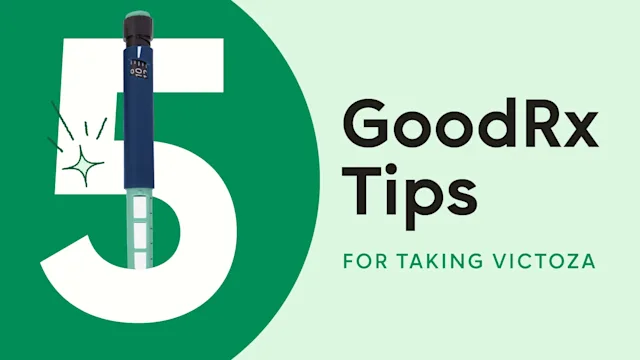Key takeaways:
A normal hemoglobin A1C (HbA1C or A1C) level is below 5.7%. A higher A1C level could mean you have prediabetes or diabetes.
A1C is a blood test that measures average glucose levels over the past 2 to 3 months.
It’s a good measure of blood glucose over time, but other things can affect A1C levels, too.
A hemoglobin A1C level measures your average blood glucose over time. If you have a normal A1C level, you probably don’t have diabetes or prediabetes.
An A1C test is different from a finger-prick test with a glucose meter (glucometer). This tells you what your blood glucose is at a specific moment in time. You can have a normal finger-prick test and still have diabetes or prediabetes.
Screening for diabetes is important because many people don’t know they have the condition. In fact, about 37 million people in the U.S. have diabetes, but 1 in 4 of these people with diabetes are not aware of it. And, another 96 million or so adults in the U.S. have prediabetes. Most of these people also don’t know they have it.
The American Diabetes Association (ADA) recommends A1C screening for everyone starting at age 35. With that in mind, here’s what’s considered a normal or high A1C level, and what your A1C level means for you.
What is hemoglobin A1C?
Hemoglobin is a protein that sits inside red blood cells and is responsible for carrying oxygen throughout your body. Hemoglobin can also attach to glucose (sugar) in your blood. That hemoglobin-glucose combination has a few names — glycosylated hemoglobin, hemoglobin A1C, or HbA1C. The higher the amount of glucose in your blood, the higher your hemoglobin A1C levels will be.
What does an A1C level measure?
An A1C test measures the percentage of hemoglobin in your blood that carries glucose. Having a high A1C level means that you have too much glucose in your blood. This could mean you have prediabetes or diabetes.
The helpful thing about an A1C test is that it represents your average blood glucose levels over 2 to 3 months. In other words, the pizza you had the night before doesn’t affect it, and you don’t have to fast (avoid eating) for the test to be accurate. That’s because glucose stays attached to hemoglobin for the entire life of a red blood cell, or about 2 to 3 months.
But no test is perfect. And, there are other factors that can affect A1C levels other than blood glucose levels. The following can all cause false A1C results:
Medications
Anemia
Kidney disease
High triglycerides
Spleen surgery
Read more like this
Explore these related articles, suggested for readers like you.
Normal A1C levels with and without diabetes
A1C testing is a good way to screen for prediabetes and diabetes in certain groups:
People at high risk of diabetes
People with symptoms
All people older than 35 years
A1C testing is also useful for monitoring treatment in people living with diabetes.
What’s considered a “normal” A1C differs depending on whether you already have a diagnosis of diabetes. Let’s find out more.

Normal A1C range for people without diabetes
If you don’t have diabetes, your A1C result should be below 5.7%.
If your A1C is higher than that, then you may get a new diagnosis of prediabetes or diabetes:
Prediabetes: A1C between 5.7% and 6.4%
Diabetes: A1C of 6.5% or higher
Normal A1C range for people with diabetes
If you’re already living with diabetes, then your A1C likely won’t be “normal.” But you’ll have a target A1C to shoot for.
For most people living with diabetes, a healthy A1C target (per the ADA) is under 7%.
But, depending on your age, your overall health, medical background, and whether you have any memory problems, your diabetes care team may set a higher target A1C, such as between 8% and 8.5%.
Can you have a high A1C and not have diabetes?
Yes, you can have a high A1C level and not have diabetes. This is because an A1C test measures the amount of glucose that’s attached to hemoglobin. So anything that affects hemoglobin can alter the results. Certain medications, such as steroids, can also raise blood glucose levels in people who don’t have diabetes.
What can falsely raise A1C levels above normal?
Different conditions can falsely raise A1C test results. This may lead you to think you have too much glucose in your bloodstream when that isn’t actually the case. Conditions that can lead to an inaccurately high A1C level include:
Some anemias: Anemia caused by a lack of iron, vitamin B12, or folate (vitamin B9) can interfere with the creation of new red blood cells. This means that older cells may stay around longer, raising A1C results.
Kidney disease: Kidney problems can create a falsely high A1C because of anemia and low vitamin or mineral levels.
High triglycerides: Triglycerides, a type of fat in your blood, and A1C levels mirror each other. If you have high triglycerides, then you may have an inaccurately high A1C.
Spleen surgery: If you had surgery to remove part or all of your spleen, you may have falsely high A1C results. One job of the spleen is to remove old red blood cells, so surgery that alters the spleen can affect this process.
What can falsely lower your A1C levels?
Certain conditions can falsely lower A1C test results. This may lead you to think you don’t have extra glucose in your bloodstream when in fact you do. Things that can lead to a falsely low A1C level include:
Anemia treatment: Iron or vitamin B12 supplements that treat anemia encourage your body to make new red blood cells. These new cells have less exposure to glucose in the bloodstream, so A1C can be falsely low.
Blood donation: After donating blood, the body works hard to produce new red blood cells. This affects A1C levels in the bloodstream because there’s a large amount of new cells.
Pregnancy: During pregnancy the body makes more red blood cells to carry oxygen to the fetus. This can make A1C results falsely low.
Hemolysis: A1C can be falsely low when red blood cells are destroyed. This can happen due to an autoimmune disease or certain medications (like ribavirin or interferon alpha).
Erythropoietin treatment: Erythropoietin, the active ingredient in Epogen and Procrit, increases red blood cells after chemotherapy. This can falsely lower results.
Dialysis: Red blood cells have a short life span for people who get dialysis, so there’s less time for sugar to stick to them. This may make A1C levels appear better than they actually are.
What other factors can influence your A1C test?
If your A1C test results are outside of the normal range, talk with your medical team. A lab result may seem to give a clear answer, but that isn’t always the case. Your healthcare professional will account for your health history before diagnosing prediabetes or diabetes. As mentioned above, there are many reasons your A1C levels may be higher or lower than expected.
Any situation that affects your red blood cells can alter A1C results. This includes people who have a hemoglobinopathy — a different type of hemoglobin. This is more common in some families than others. Let your care team know if you or your family are from African, South and Southeast Asian, or Mediterranean descent.
Is there an alternative to the A1C test?
There are other tests that are helpful when screening for diabetes. They include:
Fasting blood glucose
Oral glucose tolerance testing
Fructosamine testing
You do fasting and oral tolerance testing first thing in the morning, before you eat or drink anything. With a mixed-meal tolerance test, you’ll have a sugary drink shortly before the blood glucose test.
Your medical team may order a fructosamine blood test if A1C testing isn’t accurate for you. It checks for the concentration of fructosamine, a protein in your blood, to get an estimate of blood glucose levels over time.
The bottom line
An A1C test measures the amount of hemoglobin in your blood that carries glucose. It’s a great way of testing for prediabetes and diabetes. If your A1C level is normal — less than 5.7% — then it’s very likely you don’t have diabetes.
A1C is also useful for monitoring how well a diabetes treatment plan is working. People living with diabetes have a target A1C to shoot for. That A1C level will vary depending on the person, their age, and medical background.

Why trust our experts?


References
American Diabetes Association Professional Practice Committee. (2022). 2. Classification and diagnosis of diabetes: Standards of medical care in diabetes—2022. Diabetes Care.
Centers for Disease Control and Prevention. (2022). All about your A1C.
Centers for Disease Control and Prevention. (2022). Diabetes and prediabetes.
Danese, E., et al. (2015). Advantages and pitfalls of fructosamine and glycated albumin in the diagnosis and treatment of diabetes. Journal of Diabetes Science and Technology.
Kuo, I. C., et al. (2018). Anemia modifies the prognostic value of glycated hemoglobin in patients with diabetic chronic kidney disease. PLoS One.
National Institute of Diabetes and Digestive and Kidney Diseases. (2020). The A1C test & race/ethnicity.
Radin, M. S. (2013). Pitfalls in hemoglobin A1C measurement: When results may be misleading. Journal of General Internal Medicine.
Tamez Perez, H. E., et al. (2012). Glucose disturbances in non-diabetic patients receiving acute treatment with methylprednisolone pulses. Revista da Associacao Medica Brasileira.















